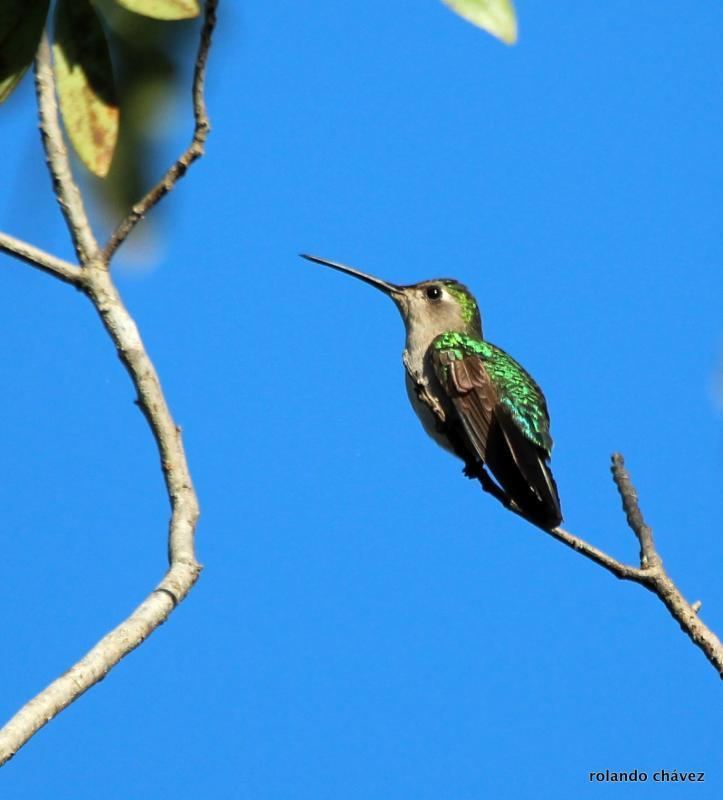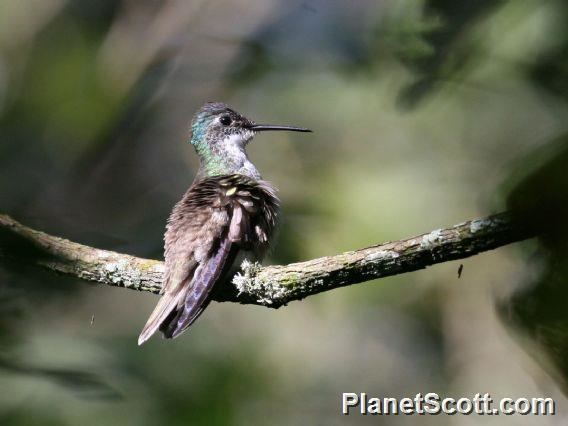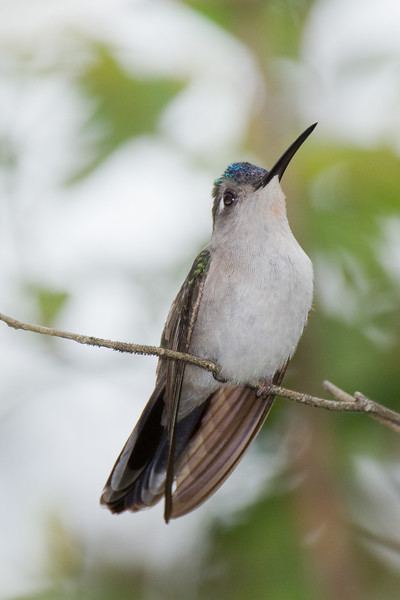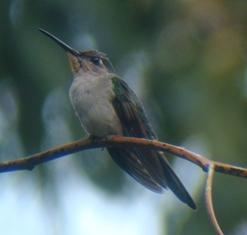Genus Campylopterus Higher classification Sabrewing | Phylum Chordata Family Trochilidae Scientific name Campylopterus pampa Rank Species | |
 | ||
Similar Sabrewing, Rufous sabrewing, Green‑fronted hummingbird, Santa Marta sabrewing, Napo sabrewing | ||
The wedge-tailed sabrewing (Campylopterus pampa) is a species of hummingbird in the family Trochilidae. It is found in Belize, Guatemala, Honduras, and Mexico. Its natural habitats are subtropical or tropical moist lowland forests and heavily degraded former forest.
Contents

Taxonomy

There were once three recognized subspecies of wedge-tailed sabrewing (under the scientific name C. curvipennis), but all are now considered separate species, which have completely separate ranges. Curve-winged sabrewing (C. curvipennis) occurs closest to the U.S. border and has a slightly longer bill than C. pampa, which occurs from Honduras to the Yucatán Peninsula. Long-tailed sabrewing (C. excellens) is the other taxon.
Description

The wedge-tailed sabrewing is a large hummingbird with a long wedge-shaped tail. Upperparts are green with blue to violet-blue crown that blends into the green nape. It has a white spot behind its eyes and a dark gray cheek. Underparts are pale gray to whitish, often slightly darker laterally. The bill is long and ranges from straight to slightly decurved, and the lower mandible is pinkish at base. The adult male is slightly larger than the female, but other than that sexes are similar. Juveniles are similar to adults but duller in coloring.

C.c. pampa are 5½ inches long. Males weigh 6½ grams and females weigh 5 grams. Its eyes are very dark brown, appearing black, and legs are dark brown.
Distribution and habitat

The wedge-tailed sabrewing resides in humid tropical forests, woodlands, and dense second growth, ranging from near sea level to 4500 feet above sea level. It is not known to migrate.
Behavior
The wedge-tailed sabrewing often forages along walls of vegetation at forest edges and on steep slopes. Its flight style varies from the rapid wingbeats of typical hummingbirds to slower wingbeats like those of swifts. It is bold and curious, and often approaches humans. It breeds from March to July, and its nest is a well-camouflaged cup attached to a horizontal branch.
Vocalization
Calls include steady, persistent chipping and a shrill, nasal peek. The wedge-tailed sabrewing usually sings from dense vegetation, and its songs are complex and variable, usually including insect-like chips, squeaks, and squeals, followed by a series of excited warbled or gurgling notes. Males sing year-round, sometimes in small groups. Some tail or wing movements are associated with perched singing displays.
